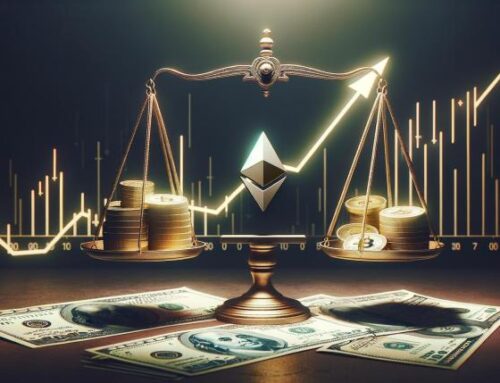The No. 1 Stock Pick for Retirees Is Apple — How Much You Need To Invest
August 21, 2025

Jakub Porzycki / NurPhoto / Shutterstock.com
GOBankingRates’ editorial team is committed to bringing you unbiased reviews and information. We use data-driven methodologies to evaluate financial products and services – our reviews and ratings are not influenced by advertisers. You can read more about our editorial guidelines and our products and services review methodology.
20 Years
Helping You Live Richer
Reviewed
by Experts
Trusted by
Millions of Readers
Apple is one of the most beloved companies in the entire world. Consumers love Apple’s entire user-friendly product line, from iPhones and MacBooks to iPad and AirPods. The stock has also been a Wall Street darling for years, topping the overall market’s return over the past five years and becoming the first stock to reach $3 trillion in market capitalization. Its long-term status as a blue-chip stock makes it a top choice for retirees.
But is Apple alone enough to fund your nest egg? How much would you need to invest to reach your retirement goals?
To know how much Apple you’ll need to invest in, you’ll have to start with your retirement savings goal. Depending on your lifestyle and where you live, you might need anywhere between $500,000 and $3 million or more to fund a comfortable retirement. Obviously, the less you’ll need in retirement, the less Apple stock you’ll need.
The younger you are when you begin your investment career, the less Apple stock you’ll need to buy. For example, if you own $20,000 of Apple stock at age 25 and earn a 10% annual return until age 65, the stock will be worth nearly $1.1 million. But if you wait to buy $20,000 of Apple until age 40, a 10% annual return will only net you about $241,000.
There’s no way of determining exactly how much Apple stock you need to fund your retirement simply because its return is variable and unpredictable. However, using various starting ages and a range of returns for the stock, you could estimate how much you need now.
These figures all assume a retirement age of 65 and a final nest egg value of $1.5 million. If you feel you’ll only need $500,000 to retire, you could use one-third of these values. If you’re looking for $3 million, you’ll have to double them.
Apple’s closing price of $229.65 on Aug. 12, 2025, is used for purposes of this calculation.
| Age | 5% annual return | 8% annual return | 10% annual return | 15% annual return | 20% annual return |
| 20 | 461 shares ($105,865) | 120.4 shares ($27,650) | 49.29 shares ($11,320) | 5.3 shares ($1,221) | 0.58 shares ($133) |
| 30 | 759.47 shares ($174,407) | 267.27 shares ($61,378) | 133.42 shares ($30,639) | 23.61 shares ($5,422) | 4.21 shares ($966) |
| 40 | 1,250.82 shares ($287,250) | 593.24 shares ($136,237) | 361.16 shares ($82,940) | 104.82 shares ($24,071) | 30.58 shares ($7,022) |
| 50 | 2,060.11 shares ($473,105) | 1,316,77 shares ($302,396) | 977.67 shares ($224,522) | 465.40 shares ($106,880) | 222.23 shares ($51,034) |
The chart makes it clear that the earlier you can invest in Apple, the better your long-term results. Similarly, the increase in average annual return by just a few percentage points also makes a huge difference in your long-term account value.
According to FinanceCharts, here are the long-term average annual returns for Apple over various time periods:
- Three-year period: 12.67%
- Five-year period: 15.67%
- 10-year period: 24.30%
- 15-year period: 25.24%
- 20-year period: 28.90%
This clearly shows that Apple’s average annual returns have been decreasing over time, which makes sense for a maturing growth company. But even over the most recent three-year period, Apple has topped the 10% long-term average annual return of the overall market.
No financial advisor would endorse putting all of your retirement money into a single stock, even one as successful as Apple. The risk is just too high when you invest in any single stock. Even Apple can have years when it’s down in value by 30% or more, and if one of those years comes right before you retire, you’ll be behind the eight-ball from the start.
Also important to note is that past performance is not a guarantee of future results. Although Apple’s long-term record has been absolutely stellar, the company is long past its fast-growth years and is more of a consistent revenue generator these days. While it will likely continue to be a market leader, there may be better opportunities available if you’re looking for growth.
Even if Apple continues to perform well, there’s absolutely no way of knowing the exact return the stock will provide over time. That’s why it’s prudent to use a wide range of estimated returns when forecasting the future value of Apple.
More From GOBankingRates
Search
RECENT PRESS RELEASES
Related Post




